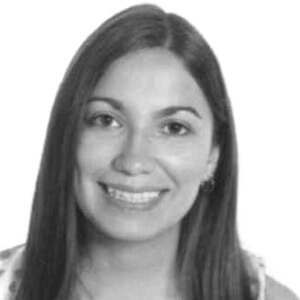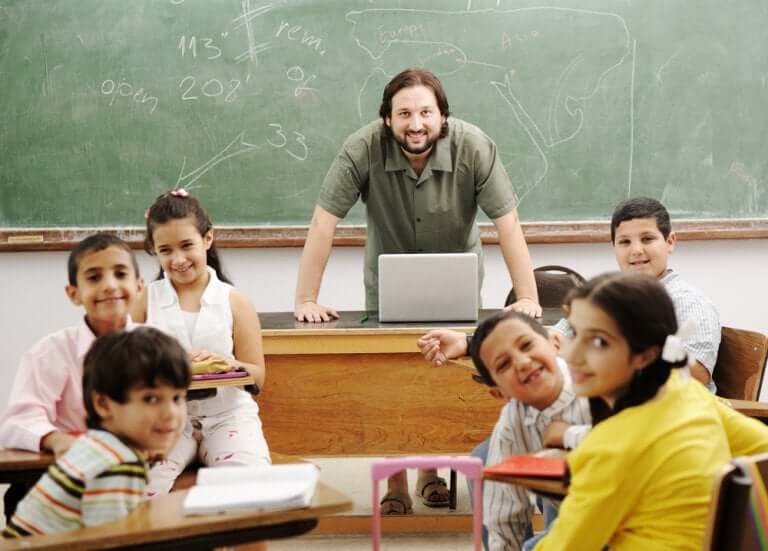6 Quotes from Howard Gardner on Education


Written and verified by the psychologist Ana Couñago
Howard Gardner is an American psychologist and researcher. He’s best known for his theory of multiple intelligences, in which he describes the existence of at least eight types of intelligence (linguistic, logical-mathematical, visuospatial, musical, body-kinesthetic, naturalistic, intrapersonal and interpersonal).
This author’s findings have had a lot of repercussions in the educational field. Because of this, in this article we’re going to bring you some of his most famous thoughts.
Gardner’s ideas on education
According to Howard Gardner, we use and combine multiple intelligences to different degrees, and in a personal and unique way. Therefore, each person has his or her own intellectual profile – more competent in some disciplines, and less so in others. Moreover, this author postulates that our own creativity expresses itself in each of these types of intelligence.
So, when it comes to understanding education, we need to do so from an integral and inclusive perspective in which:
- We work on all areas of learning
- The teachers apply Gardner’s multiple intelligences with their students during their classes

6 quotes from Howard Gardner on education
1. “Every human being has a unique combination of intelligence. This is the fundamental educational challenge.”
In order to educate children correctly, we need to know their potential and give them the opportunity to develop themselves to the fullest. In this sense, the educational system must offer individualized and personalized attention, valuing all types of intelligence equally.
2. “We can ignore differences and assume that all our minds are the same. Or we can take advantage of these differences.”
Not all children learn in the same way; each one has a specific intellectual profile and a specific learning style. This must be taken into account in order to provide quality education, paying attention to the needs of each student.
3. “The advent of new technologies forces us to educate children differently.”
Information and communication technologies can facilitate the work of teachers in the teaching-learning process. Today there are many methodologies of educational innovation that include the use of computers, tablets, and other electronic devices. Because of this, it’s possible to work and stimulate all types of intelligence and to personalize learning.
4. “Children leave their mark on life by doing what they can do, not what they cannot… School is important, but life is more important. To be happy is to use your skills productively, no matter what they are.”
According to Gardner, intelligence involves the ability to solve a problem or make products that are important in a cultural context.

Therefore, education is about getting children to acquire skills and abilities that are useful for daily life and future development. In this way, children will become adults who can contribute, in some way, to society.
5. “The aim of education is to help people to use their minds better.”
As we said before, the mind is made up of different types of intelligence. In our educational centers, we should be preparing our children to use them efficiently.
6. “We should spend less time categorizing children and more time helping them identify their natural gifts and competencies and to cultivate them. There are hundreds and hundreds of ways to succeed and many, many different skills that will help you get there.”
Quite often, children tend to be compared to each other, especially in academia. However, this is a serious mistake, because every student has certain qualities which you can harness.
Therefore, the focus in education should be on the intellectual profile of each child, and on exploiting their strengths. It’s the school that should be adapting to the students, and not the other way around.
Howard Gardner is an American psychologist and researcher. He’s best known for his theory of multiple intelligences, in which he describes the existence of at least eight types of intelligence (linguistic, logical-mathematical, visuospatial, musical, body-kinesthetic, naturalistic, intrapersonal and interpersonal).
This author’s findings have had a lot of repercussions in the educational field. Because of this, in this article we’re going to bring you some of his most famous thoughts.
Gardner’s ideas on education
According to Howard Gardner, we use and combine multiple intelligences to different degrees, and in a personal and unique way. Therefore, each person has his or her own intellectual profile – more competent in some disciplines, and less so in others. Moreover, this author postulates that our own creativity expresses itself in each of these types of intelligence.
So, when it comes to understanding education, we need to do so from an integral and inclusive perspective in which:
- We work on all areas of learning
- The teachers apply Gardner’s multiple intelligences with their students during their classes

6 quotes from Howard Gardner on education
1. “Every human being has a unique combination of intelligence. This is the fundamental educational challenge.”
In order to educate children correctly, we need to know their potential and give them the opportunity to develop themselves to the fullest. In this sense, the educational system must offer individualized and personalized attention, valuing all types of intelligence equally.
2. “We can ignore differences and assume that all our minds are the same. Or we can take advantage of these differences.”
Not all children learn in the same way; each one has a specific intellectual profile and a specific learning style. This must be taken into account in order to provide quality education, paying attention to the needs of each student.
3. “The advent of new technologies forces us to educate children differently.”
Information and communication technologies can facilitate the work of teachers in the teaching-learning process. Today there are many methodologies of educational innovation that include the use of computers, tablets, and other electronic devices. Because of this, it’s possible to work and stimulate all types of intelligence and to personalize learning.
4. “Children leave their mark on life by doing what they can do, not what they cannot… School is important, but life is more important. To be happy is to use your skills productively, no matter what they are.”
According to Gardner, intelligence involves the ability to solve a problem or make products that are important in a cultural context.

Therefore, education is about getting children to acquire skills and abilities that are useful for daily life and future development. In this way, children will become adults who can contribute, in some way, to society.
5. “The aim of education is to help people to use their minds better.”
As we said before, the mind is made up of different types of intelligence. In our educational centers, we should be preparing our children to use them efficiently.
6. “We should spend less time categorizing children and more time helping them identify their natural gifts and competencies and to cultivate them. There are hundreds and hundreds of ways to succeed and many, many different skills that will help you get there.”
Quite often, children tend to be compared to each other, especially in academia. However, this is a serious mistake, because every student has certain qualities which you can harness.
Therefore, the focus in education should be on the intellectual profile of each child, and on exploiting their strengths. It’s the school that should be adapting to the students, and not the other way around.
All cited sources were thoroughly reviewed by our team to ensure their quality, reliability, currency, and validity. The bibliography of this article was considered reliable and of academic or scientific accuracy.
- Capel López, L. (2019) Inteligencias múltiples en el aula de Educación Infantil. https://core.ac.uk/download/pdf/235850038.pdf
- Gardner, H. (1993). Inteligencias Múltiples: la teoría en la práctica. Barcelona:
Paidós. - Gardner, H. (2000). La educación de la mente y el conocimiento de las disciplinas.
Barcelona: Paidós. - Medina Benítez, M. D. (2021). La creatividad como operación básica de la inteligencia: teorías relacionadas con la experimentación artística como experiencia formadora. https://accedacris.ulpgc.es/bitstream/10553/112055/1/Creatividad_operacion_basica.pdf
- Montenegro, N. A. B. (2021). SINERGIA: LO INVISIBLE ES LO ESENCIAL. https://revistas.udenar.edu.co/index.php/rhuellas/article/view/6313
- Sánchez-Aquino, L.I. (2015). La teoría de las inteligencias múltiples en la educación. México:Universidad Mexicana.
This text is provided for informational purposes only and does not replace consultation with a professional. If in doubt, consult your specialist.








